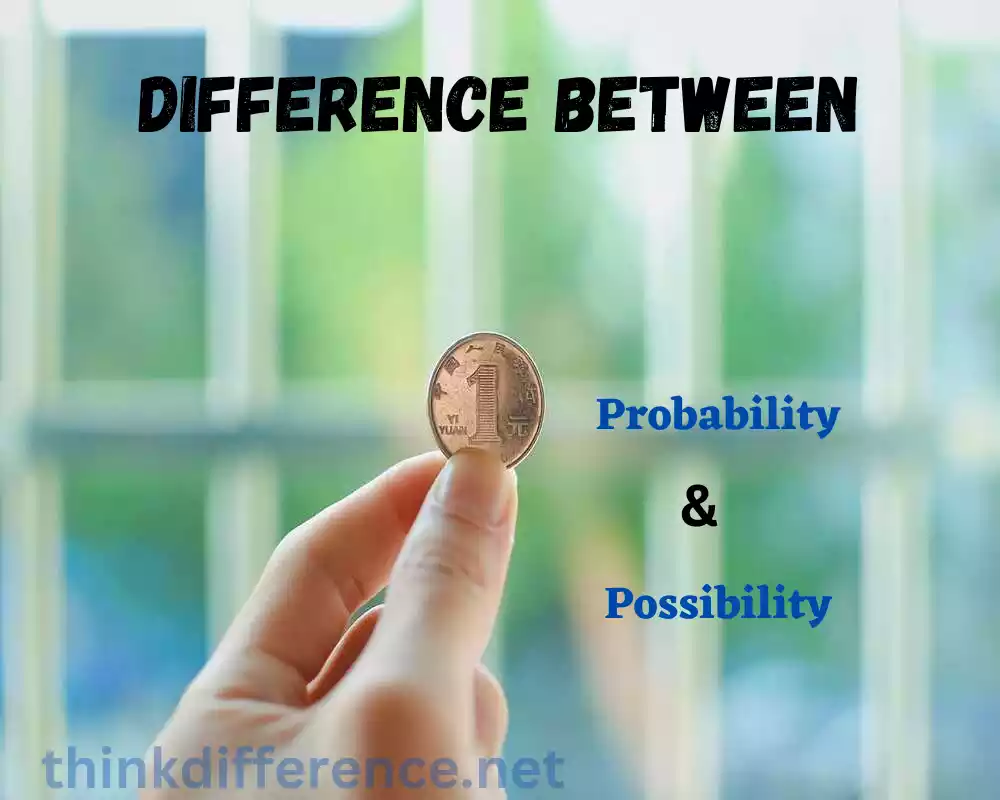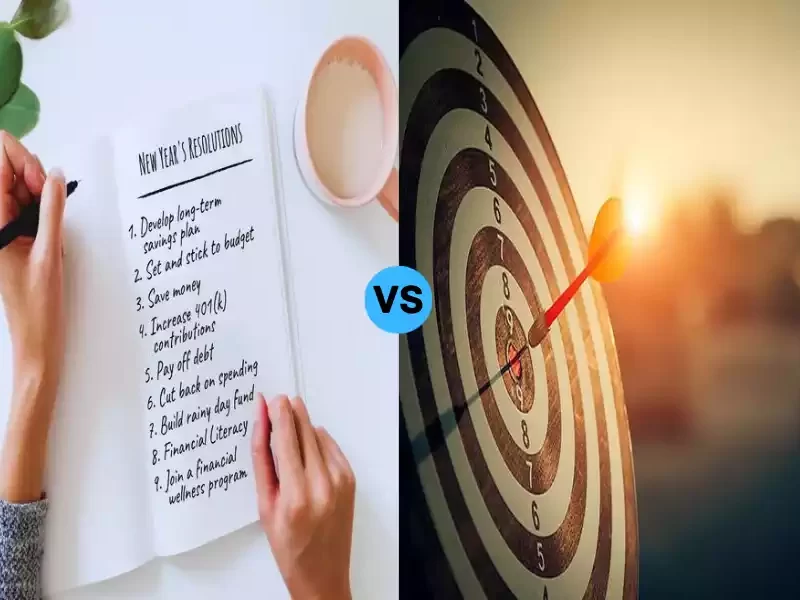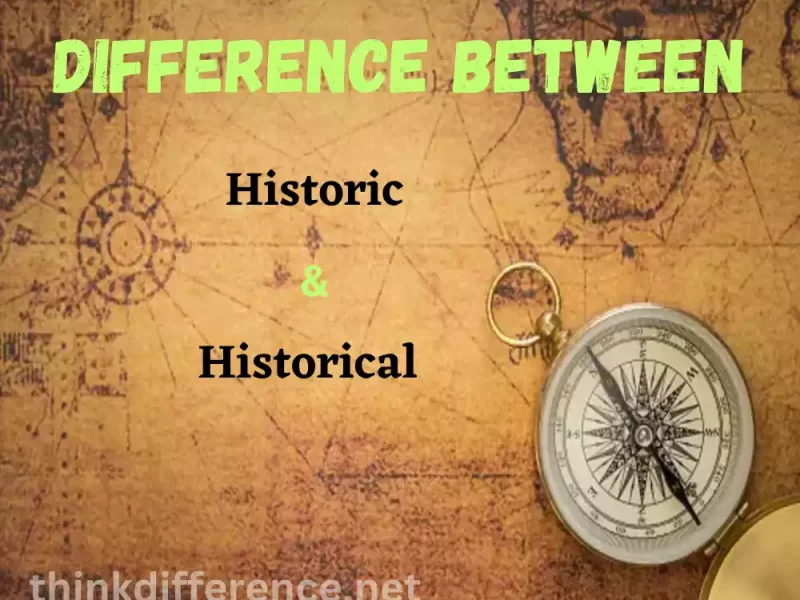Probability and Possibility both play significant roles in mathematics, statistics, as well as everyday decision-making. Understanding the difference between probabilities and possibilities can assist with making informed choices by weighing risks properly and anticipating results – in this article we’ll look into their definitions, implications and differences.
Brief explanation of Probability and Possibility
Probability and possibility both serve to define the likelihood or probabilities that an event or outcome occurs. They differ considerably in regards to definition and application.
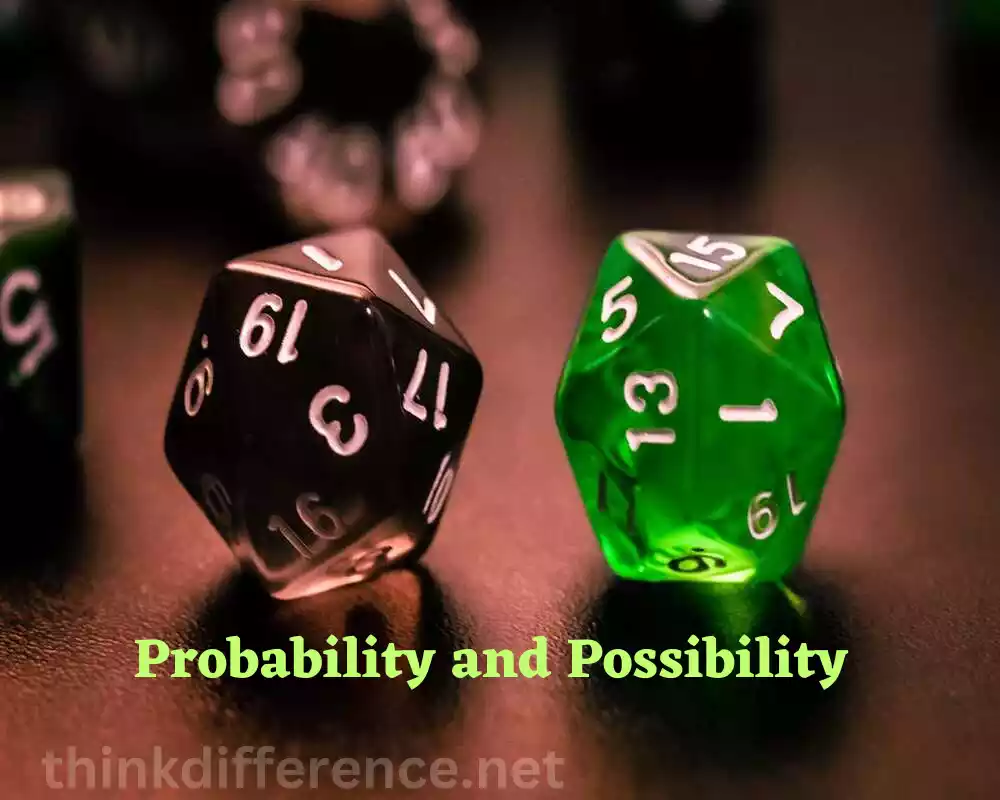
Probability measures the likelihood that something will take place and is typically expressed as a number from zero to one. Where zero indicates impossibility and one indicates certainty. Probabilities can be established through available information such as previous observations or mathematical models as well as quantitative data analytics or forecasting applications. They have applications across fields like mathematics, statistics and decision theory in estimating probabilities associated with various outcomes.
Potential describes something which exists or occurs within its realm of possibility or potential and does not need numerical values assigned for evaluation purposes. Like probability, potential doesn’t provide one particular measure but instead considers various potential outcomes as possibilities.
Probability can be defined as the ability to quantify probabilities based on available data while possibility refers to assessing outcomes based on hypotheses and scenarios. Understanding this distinction between probabilities and possibilities is vital when making informed decisions and interpreting their results since each serve distinct goals with differing implications across various fields.
Importance of understanding the difference between Probability and Possibility
Due to multiple reasons, distinguishing between probabilities and possibilities is crucial:
- Accurate Decision Making: Differentiating between probability and possibility helps in making informed decisions. Probability provides quantitative information about the likelihood of an event occurring based on available data, while possibility considers potential outcomes within the realm of feasibility. By understanding this distinction, individuals can assess the reliability of data and consider various scenarios, leading to more accurate decision-making processes.
- Risk Assessment: Probability helps in assessing risks by quantifying the likelihood of certain outcomes. By understanding probability, individuals can evaluate the potential impact and consequences of different events or actions. Possibilities this allows exploring an extensive spectrum of possibilities which includes less likely possibilities but are nonetheless viable options. By considering both probability and possibility, individuals can gain a more comprehensive understanding of the risks involved in a given situation.
- Statistical Analysis: Probability is a fundamental concept in statistical analysis. It enables researchers to model and analyze data, make predictions, and draw conclusions based on statistical inference. By understanding probability, researchers can determine the reliability of their findings and estimate the uncertainty associated with their results. Possibility, while not as quantifiable, can also be considered in statistical analysis to explore alternative explanations or scenarios.
- Communication and Interpretation: Differentiating between probability and possibility helps in effective communication and interpretation of information. It allows individuals to express the level of confidence in predictions or expectations accurately. Using the appropriate terminology and conveying the distinction between probability and possibility ensures that information is understood correctly and prevents misunderstandings or misinterpretations.
- Problem Solving: Probability and possibility play crucial roles in problem-solving processes. Probability helps in assessing the likelihood of different solutions being successful, while possibility expands the range of potential solutions that can be considered. By understanding these concepts, individuals can approach problem-solving with a balanced perspective, considering both the most probable solutions and exploring alternative possibilities.
Understanding the difference between probability and possibility enhances decision making, risk assessment, statistical analysis, communication and problem-solving processes. By recognizing the distinct nature and implications of these concepts, individuals can make more informed judgments and evaluations in various domains of life and work.
What is Probability?
Probability measures the likelihood that something will take place and can range between zero and one, where zero indicates an unlikely event happening and one indicates certainty.
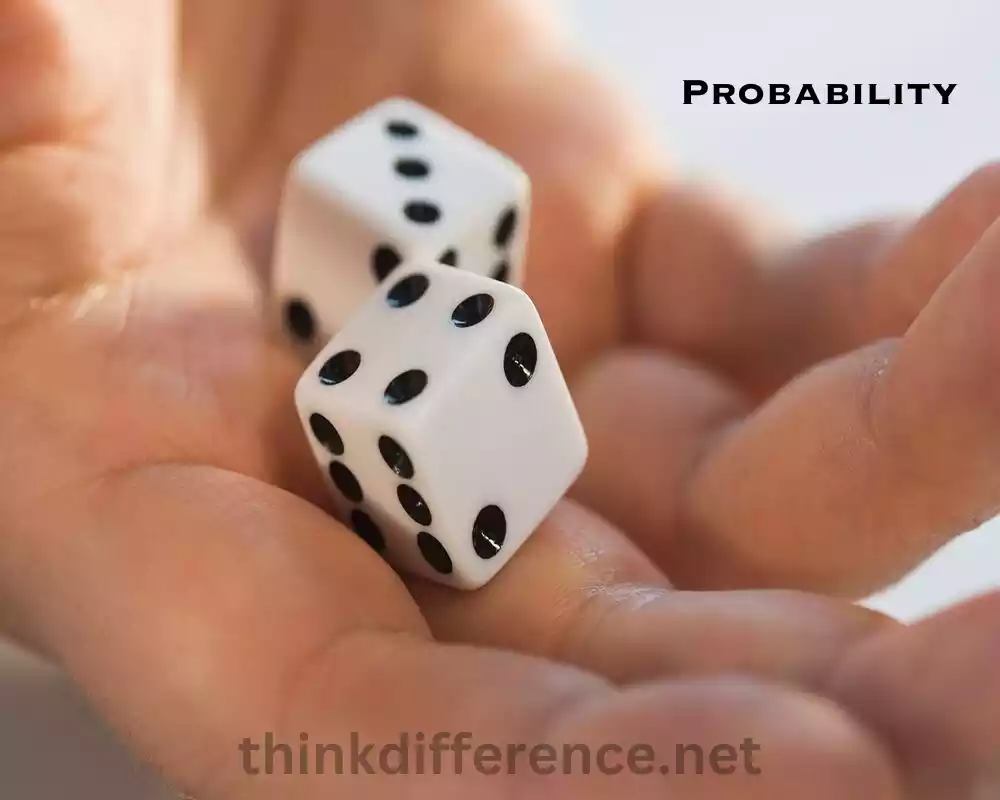
Probability can be calculated based on evidence, data and mathematical formulas. It involves the process of examining past events to analyze patterns or frequencies which help predict future ones based on probability calculations. Its application spans many fields including mathematics, statistics and finance as well as science and decision theory as it allows to make predictions, evaluate risks and guide decision making processes.
The calculation and interpretation of probabilities involve several key principles:
- Probability as a Ratio: Probability can be calculated as the ratio between favorable outcomes and potential outcomes. If we flip a fair coin and you get heads, odds of it occurring would be one in two, which equals 1/2.
- Probability as a Range: Probabilities range from 0 to 1, inclusive. Probabilities can be expressed using probabilities scales. An event with probability equal to zero means it cannot happen while one means its certaintiy, signalling its certainty as occurring. Probabilities between 0 and 1 represent varying degrees of likelihood.
- Subjective and Objective Probability: Probability can be subjective or objective. Subjective probability reflects an individual’s personal belief or degree of confidence in an event occurring. Objective probability is based on data, observations or mathematical models that are independent of personal opinions.
- Conditional Probability: Conditional probability measures the odds that an event might happen based on events that have already transpired. It is denoted as P(A|B), where A and B are events. Consider drawing one of the red cards from a deck when the previous card that has been drawn was black.
- Addition and Multiplication Rules: The addition and multiplication rules are fundamental principles in probability calculations. The addition rule states that the probability of either of two mutually exclusive events occurring is the sum of their individual probabilities. The multiplication rule states that the probability of two independent events occurring is the product of their individual probabilities.
- Probability Distributions: Probability distributions provide information about the likelihood that various outcomes within an event occur. They provide a comprehensive representation of probabilities for each possible outcome. Common probability distributions include the binomial, normal (Gaussian) and Poisson distributions.
Understanding probability allows people to analyze risks, predict outcomes using data sets, make informed choices based on probabilities associated with various outcomes and make more informed choices due to this knowledge. It serves as a powerful instrument for studying degree of uncertainty or variation across many fields of research such as finance, science technology engineering and other subjects of research.
What is Possibility?
Possibility refers to the potential existence or occurrence of something within the realm of feasibility or potentiality. It involves exploring what could potentially happen without assigning specific numerical values or quantifying the likelihood of an event.

Possibility is often evaluated qualitatively, considering hypothetical scenarios, assumptions, constraints and contextual factors. It allows for the exploration of various potential outcomes or situations without relying on concrete data or observed frequencies. Possibility encompasses a broader range of potentialities, including those that may have a low probability but are still plausible.
Key aspects of understanding possibility include:
- Hypothetical Scenarios: Possibility involves considering hypothetical scenarios or conditions that may lead to different outcomes. It encourages individuals to think beyond the present circumstances and explore alternative possibilities.
- Constraints and Limitations: Possibilities depend upon any restrictions or constraints which might decrease its likelihood. These constraints can be physical, practical or theoretical in nature and help in narrowing down the range of possible outcomes.
- Context and Conditions: Possibility is highly context-dependent. Different contexts or conditions can influence what is considered possible in a particular situation. Factors such as resources, time, regulations and external influences can shape the realm of possibilities.
- Exploration and Creativity: Possibility encourages creative thinking and the exploration of different options. It allows individuals to go beyond what is currently known or observed and consider innovative or unconventional solutions to problems.
- Practical Implications: Assessing possibilities can have practical implications in planning, problem-solving and decision-making. By considering a range of potential outcomes, individuals can prepare for contingencies, identify risks and develop strategies to address different possibilities.
Keep in mind that possibility can provide multiple outcomes. Quantitative analyses offer more precise measures of probabilities or likelihoods. Possibility complements probability by expanding the scope of potential outcomes and considering scenarios that may have low probability but still hold relevance.
Understanding possibility helps individuals think creatively, explore alternative paths, and prepare for uncertainties. It encourages a broader perspective and enables individuals to consider a range of potential outcomes in various contexts, ultimately enhancing decision-making processes and problem-solving approaches.
Differences Between Probability and Possibility
There are several key differences between probability and possibility:
- Nature of the Concepts:
- Probability: Probability is a quantitative concept that assigns numerical measures to the likelihood of an event occurring. It provides a specific value between 0 and 1, representing the chances of an outcome.
- Possibility: Possibility is a qualitative concept that explores the potential existence or occurrence of something. It does not involve assigning numerical values but rather considers what could potentially happen within the realm of feasibility.
- Basis of Evaluation:
- Probability: Probability is based on available data, observations, or mathematical models. It relies on evidence, past occurrences, or statistical analysis to estimate the likelihood of an event happening.
- Possibility: Possibility is evaluated based on hypothetical scenarios, assumptions, constraints, and contextual factors. It considers a broad range of potential outcomes without relying on concrete data or observed frequencies.
- Interpretation and Implications:
- Probability: Probability is interpreted as a prediction or expectation of an event happening. Use an education quiz as the foundation of decision making and risk evaluation. Assess probabilities associated with various outcomes and make educated choices based on those results.
- Possibility: Possibility is interpreted as a potential or hypothetical outcome. It explores what could happen without specifying the likelihood or probability. Possibility expands the range of potential outcomes and allows for creative thinking and exploration.
- Quantitative vs. Qualitative:
- Probability: Probability is a quantitative concept that involves precise calculations and numerical measures. It allows for mathematical analysis, statistical inference, and precise comparisons between different probabilities.
- Possibility: Possibility is a qualitative concept that focuses on the qualitative assessment of potential outcomes. It does not involve assigning specific numerical values or making precise quantitative comparisons.
- Application and Usage:
- Probability: Probability can be used in many fields including mathematics, finance, statistics and science as well as decision theory. It is employed to make predictions, assess risks, guide decision-making processes and analyze data.
- Possibility: Possibility is applicable in various domains, including planning, problem-solving, creativity and scenario exploration. It helps in considering alternative options, preparing for contingencies and thinking beyond the known or observed.
Understanding the differences between probability and possibility is crucial for appropriately applying these concepts in relevant contexts. Probability provides a quantitative measure of likelihood, while possibility explores qualitative assessments of potential outcomes. Awareness of these distinctions allows individuals to make more informed choices, evaluate risks more precisely and consider all possibilities of outcomes more thoroughly.
Relationship of Probability and Possibility
Probability and chance are closely interlinked concepts which combine to give us an understanding of probabilities and possibilities within situations. Although they remain distinct concepts, their connections are clear:
- Probability within Possibility:
- Within the realm of possibility, certain outcomes may have higher or lower probabilities. Probability refers to any method for measuring the chances that something will take place, thus increasing or decreasing its likelihood. When assessing possibilities, probability can be used to assign numerical values to different outcomes, indicating their relative likelihood.
- Possibility beyond Probability:
- Possibility expands the scope beyond what is quantifiable through probability. While probability focuses on specific numerical measures, possibility considers a broader range of potential outcomes, including those with low probabilities. Possibility encompasses imaginative thinking, exploration of alternative scenarios and consideration of unconventional or unforeseen events.
- Informing Decision-Making:
- Probability and possibility contribute to informed decision-making. Probability provides quantitative information, helping individuals assess risks, estimate future outcomes and make rational choices based on the likelihood of different events. Possibility encourages considering diverse potential outcomes, preparing for uncertainties and identifying alternative strategies or paths.
- Assessing Uncertainty:
- Both probability and possibility address uncertainty. Probability allows for a more precise assessment of uncertainty by assigning numerical values to different outcomes based on available data. Possibility, while not providing specific numerical measures, helps individuals explore the range of potential outcomes and consider a wider array of scenarios in the face of uncertainty.
- Contextual Factors:
- Both probability and possibility are influenced by contextual factors. They consider the specific conditions, constraints, and assumptions that shape the likelihood and potential outcomes of events. Contextual factors have an immense effect on how probabilities (such as sample or distribution size) and possibilities ( such as available resources/external influences) are evaluated, providing us with insights into their correlation.
Probability and possibility are related concepts that contribute to understanding uncertainty, assessing risks, and making informed decisions. Probability provides a quantifiable measure of likelihood within the realm of possibility, while possibility expands the scope beyond specific numerical values, encouraging exploration and consideration of diverse potential outcomes. By considering both probability and possibility, individuals can navigate uncertainty more effectively and make robust decisions in various domains.
Conclusion
Probability and Possibility stand as pillars in the realm of uncertainty, providing us with invaluable tools to navigate through the complexities of our world. While probability quantifies the likelihood of events based on data and mathematical models, possibility theory deals with situations where information is incomplete or vague. Embracing both concepts allows us to harness the power of uncertainty and make better decisions in various aspects of life.

